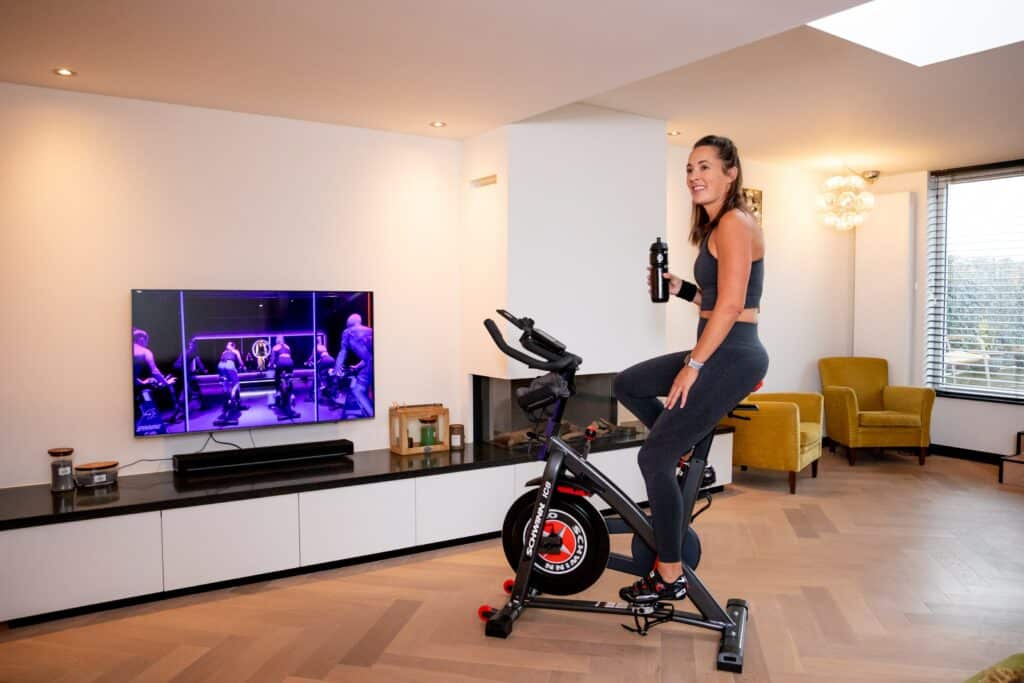Losing Weight with Indoor Cycling: How It Can Help You Achieve Your Ideal Weight

Are you wondering if losing weight with Indoor Cycling is possible? The answer is a resounding yes! In this article, we will explore how indoor cycling can support your weight loss goals and help you achieve your ideal weight. While nutrition plays a crucial role in maintaining a healthy weight, incorporating indoor cycling into your routine can be a powerful tool for shedding those extra pounds.
Table of Contents
The Basis of a Healthy Weight
Maintaining a healthy weight starts with proper nutrition. As the saying goes, “You are what you eat.” Consuming a balanced diet, avoiding excessive calorie intake, and making healthy choices are key to achieving and sustaining a good weight. However, it’s important to recognize that factors like gender, age, and muscle mass influence how our metabolism functions.
Despite these variations, creating a calorie deficit remains essential for weight loss. While some people opt for restrictive diets, these approaches often yield temporary results, with weight being regained once the diet ends.
Can You Lose Weight without a Diet?
The art of losing weight lies in adopting an eating pattern that doesn’t create a detrimental deficit. Your body requires adequate nutrients, including proteins, fats, carbohydrates, and vitamins, to support your immune system and overall well-being. When aiming for weight loss, it’s crucial to prioritize fat loss rather than muscle mass. Restricting food intake excessively or imbalancing nutrient proportions can put muscle mass at risk.
Fortunately, a healthy diet combined with regular exercise can help you achieve a responsible calorie deficit and promote sustainable weight loss. While both cardio and strength training are effective, it’s essential to choose activities that you enjoy and can maintain consistently. For individuals carrying excess weight, high-impact exercises like running may strain the joints. In such cases, swimming or indoor cycling are excellent alternatives that provide cardiovascular benefits while being gentler on the joints.
Debunking Myths about Losing Weight with Indoor Cycling
People often wonder if Indoor Cycling gives you a flat stomach. It used to be thought that you would get a tight belly by training your abdominal muscles. Unfortunately, abdominal exercises alone don’t create a six-pack. If you want to get a flat stomach, besides training your abs, you will also have to watch your nutrition and train your large muscle groups. These are your legs, back, chest, and shoulders. By training these large muscle groups and the growth of your total muscle mass, your metabolism will increase, even at rest.
Another concern people often have is whether indoor cycling will result in thicker legs. Contrary to popular belief, indoor cycling does not cause thick legs. Just take a look at professional racing cyclists who consistently engage in cycling workouts. Regular cycling can actually help reduce fat in the legs, making them appear more toned and muscular.

Burning Lots of Calories and Losing Weight with Indoor Cycling
Indoor cycling classes are highly effective for weight loss due to the significant number of calories burned during each workout. The exact calorie burn varies based on factors such as body weight. On average, a person weighing 80 kilograms can burn 561 calories in a 45-minute indoor cycling session and 748 calories in a 60-minute session. That’s equivalent to two substantial lunch meals!
‘MET-value’: Metabolic Equivalent of Task
To calculate the calories burned during an indoor cycling workout, you can use the MET value (Metabolic Equivalent of Task). MET values represent the intensity of effort, with a normal indoor cycling workout having a value of 8.9 and a vigorous workout reaching 9.8. By multiplying the MET value by your weight in kilograms, then by 0.0175, and finally by the number of minutes, you can determine the approximate calorie burn. For example, a 60-kilogram person cycling for 30 minutes would burn approximately 280 calories.
So if you weigh 60 kg and do 30 minutes of Indoor Cycling, then the sum for a normal Indoor Cycling workout is -> 8.9 x 60 x 0.0175 x 30 = 280 kcal.
Given its calorie-burning potential and low impact on joints, indoor cycling has gained popularity as a preferred cardio exercise for weight loss. Many individuals now choose to invest in indoor cycling bikes for home use, allowing them to exercise at their convenience. Numerous online indoor cycling workout apps further facilitate accessibility and provide a variety of workouts to suit different preferences and fitness levels.
Losing weight with Indoor Cycling as a goal
If losing weight with Indoor Cycling, we recommend incorporating at least three indoor cycling workouts into your weekly routine. It’s important to start gradually, allowing your fitness level to build over time. Avoid overexertion, as sustainable progress and enjoyment are key to long-term adherence. Alongside regular exercise, maintaining a healthy and varied diet is crucial. Limiting sugars and fats while focusing on balanced nutrition will support your weight loss efforts. You may find the website of the Netherlands Nutrition Centre to be a helpful resource for achieving a well-rounded diet.

Calorie requirement
To understand how many calories you need in a day and track your intake, calculating your calorie requirement is essential. You can begin by determining your basal metabolic rate (BMR), which is the number of calories burned in 24 hours without activity. The formulas for calculating BMR differ based on gender:
- BMR for Women: 655 + (9.6 x weight in kilograms) + (1.8 x height in centimeters) – (4.7 x age in years)
- BMR for Men: 66 + (13.7 x weight in kilograms) + (5 x height in centimeters) – (6.8 x age in years)
The next step is to calculate your PAL value. Your PAL value is the amount of exercise you get on average per day.
- Little to no exercise (all day in bed) = 1.2
- Light exercise (if your work is not active and you don’t do any sports) = 1.375
- Normal exercise = 1.55
- Heavy exercise (physically active work, or daily exercise) = 1.725
- Very heavy exercise (professional athletes) = 1.9
You now have your BMR and PAL value. With these 2 numbers, you can calculate your daily calorie requirement: BMR x PAL = your daily calorie requirement. So your movement is already included in the above calculation!
Losing Weight Without the Yo-Yo Effect
Knowing your personal calorie needs is crucial, but it’s equally important to track your actual calorie intake. Utilizing helpful tools like the MyFitnessPal app can assist you in monitoring your food and beverage consumption accurately. This allows you to gain a comprehensive understanding of your diet. Over time, you’ll develop the ability to estimate the appropriate quantities and types of food to stay within or below your calorie requirement.
For instance, if your daily calorie requirement is 2500 kcal and your goal is weight loss, it’s essential to consume fewer calories than this amount. However, it’s important to maintain a reasonable calorie deficit. Aim for a deficit of around 200-300 kcal per day, as it is easier to sustain without experiencing dizziness, excessive hunger, or other discomforts. Remember, losing weight with Indoor Cycling in a healthy and responsible manner ensures a pleasant journey and long-lasting results!
